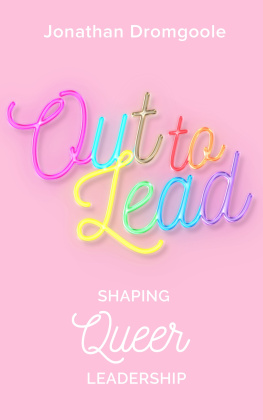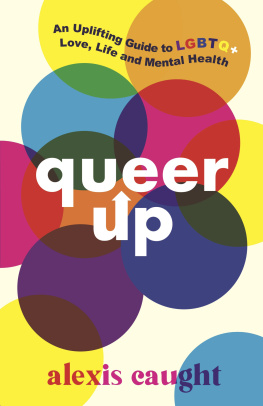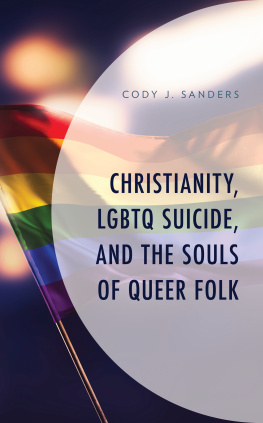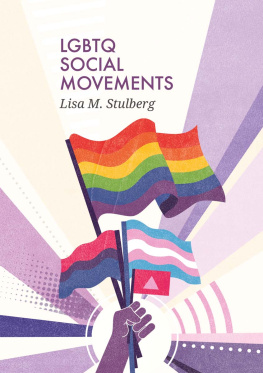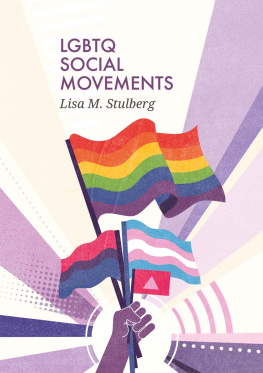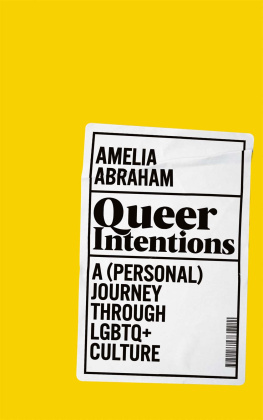Editors
Kevin L. Nadal
John Jay College of Criminal Justice, City University of New York, New York, NY, USA
Mara R. Scharrn-del Ro
Brooklyn College, City University of New York, New York, USA
ISBN 978-3-030-74145-7 e-ISBN 978-3-030-74146-4
https://doi.org/10.1007/978-3-030-74146-4
The Editor(s) (if applicable) and The Author(s), under exclusive license to Springer Nature Switzerland AG 2021
This work is subject to copyright. All rights are solely and exclusively licensed by the Publisher, whether the whole or part of the material is concerned, specifically the rights of translation, reprinting, reuse of illustrations, recitation, broadcasting, reproduction on microfilms or in any other physical way, and transmission or information storage and retrieval, electronic adaptation, computer software, or by similar or dissimilar methodology now known or hereafter developed.
The use of general descriptive names, registered names, trademarks, service marks, etc. in this publication does not imply, even in the absence of a specific statement, that such names are exempt from the relevant protective laws and regulations and therefore free for general use.
The publisher, the authors and the editors are safe to assume that the advice and information in this book are believed to be true and accurate at the date of publication. Neither the publisher nor the authors or the editors give a warranty, expressed or implied, with respect to the material contained herein or for any errors or omissions that may have been made. The publisher remains neutral with regard to jurisdictional claims in published maps and institutional affiliations.
This Springer imprint is published by the registered company Springer Nature Switzerland AG
The registered company address is: Gewerbestrasse 11, 6330 Cham, Switzerland
Foreword
Reflecting on my own graduate training in the late 1970s and 1980s, the closest we ever came to any discussions on LGBTQ training and scholarship was the result of discussions organized around clients presented at case conferences. Invariably, if someone presented a case about a client who was a sexual minority group member, the comments which were made by some of the students and the faculty clinical supervisorwhich I think were actually intended to be helpful and presumed to be expressions of liberal tolerancewere actually very destructive. I distinctly recall a professor, who was a significant leader in the field of psychology at the time, proudly demonstrating what I am sure he thought was his tolerance when he pointed out that he saw sexual minority clients and that he would never force or press them to undertake conversion therapy. Instead, he said that he would tell them that he felt sorry for them if they did not wish to change their orientation. Yet another response was a supervisors perplexity when describing his work with a gay man who was struggling with his need to come out to his family, that his gay patients always seemed to have the need to expose their families to their homosexuality. Why, he reasoned, couldnt they just keep it to themselves? At the time, there really was no space to safely challenge such homophobic or transphobic commentary, as it was simply part of the dominant cultural narrative that was normalized and supported by organized psychology at that time. There was no acknowledgement of the subjective cultural positioning of the discipline.
Simultaneously, discussing racism as a systemic inequity that might be affecting clients lives (or therapists perceptions) was also unwelcome. Students who were members of racial and ethnic minority groups had to be very strategic about how we raised questions about race, as well as in sharing some of the therapeutic work we were doing with people of color, if it openly examined the matter of race and racism. Demonstrating that racism often played a role in the presenting problems of our clients would often be interpreted as overidentification or something undesirable in a clinician. It was clear that the very paradigms we were using at the time were infused with racist, sexist, heterosexist, ableist, and ageist thinking, frequently supported by empirical research that was riddled with methodological errors and presumptions based on social bigotry wrapped in psychological accoutrements. At that time, many of our professors and supervisors were completely oblivious to these realities. There was no awareness of legitimate nondominant cultural voices.
In the earlier stages of my own work, one of the things that concerned meas someone who had no inclination toward the academy at all, as someone who felt like a stealth intruder, and as someone who identified primarily as a clinicianwas how to treat people in therapy in ways that were helpful and were not damaging. It was important for me that therapists did not reinforce the very traumatic and harmful experiences that brought clients into therapy in the first place. And while I had some ideas about how to do that in my own practice, I believed that in order to really create substantive change, psychologists and other mental health practitioners needed to be trained in how to work effectively with sexual minorities, people of color, and people of color who also identified as members of sexual minority groups. That became the impetus for some of my early work.
For the most part, my scholarly work is anchored through the lens of a clinician, rather than through a research scientist. Because there was little work in the literature at the outset of my career that one would want to use as guidance about practice in working with historically marginalized groups, a cohort of us took on the task of developing that literature. We knew that this literature needed to be out there, that these discussions needed to take place, and the only way for the field to change was if we wrote this scholarship ourselves. While there was burgeoning work on specific ethnic groups, Vickie Mays and Susan Cochran at UCLA were among the very few who were first addressing these issues with clients who were members of both ethnic and sexual minority groups in their empirical studies of Black lesbians. Finding their research was like finding gold in the wilderness.
In the earlier attempts at this multicultural scholarshipwithin LGBTQ psychology, within ethnoracial psychology, and within feminist psychologythere was a tendency for each group to want to operate on its own little islandas if these identities were isolated and consolidated into a master identity that could be separated from the others. It suggested that you could compartmentalize identity and come away with a realistic sense of what a persons experience was. At the time, I certainly understood that this was one way to enter into the discussion; however, I tried to embed a lot of my work with at least some notion that these things are intersectional. If you are working with clients, you simply cannot look at identities, as if they are in silos. While it is not a good idea in research either, it certainly was not beneficial within clinical work. It would be too reductionistic to capture the complexity of human beings by not considering how individuals navigate their multiple identities, alongside their unique lived experiences.



